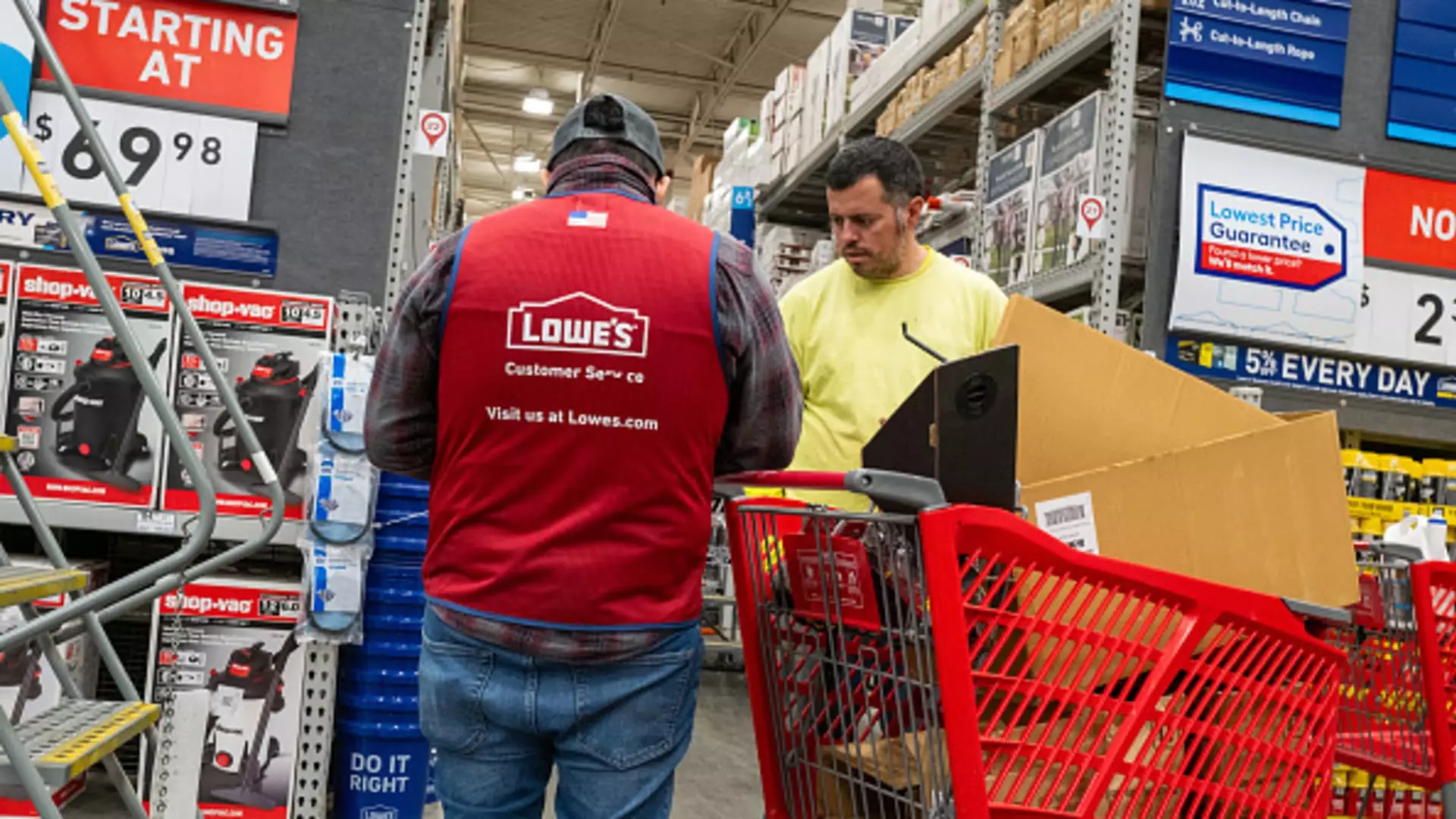Lowe’s recent announcement of a reduced full-year forecast has raised concerns about the future of the company. The retailer’s quarterly sales declined, leading to projections of weak home improvement spending in the second half of the year. The company now anticipates total sales of between $82.7 billion and $83.2 billion for the full year, a significant drop from its previous forecast of $84 billion to $85 billion. Comparable sales are expected to fall by 3.5% to 4%, compared to the prior forecast of a decline of 2% to 3%. Additionally, adjusted earnings per share are now projected to be about $11.70 to $11.90, down from the previous range of $12 to $12.30.
In an interview with CNBC, CEO Marvin Ellison attributed the decline in sales to consumers’ waiting for the Federal Reserve to cut interest rates. He highlighted the impact of high inflation and the hesitation of customers to make big-ticket purchases until interest rates fall. Fed Chair Jerome Powell’s indication of a potential rate cut in September has created uncertainty about when home improvement activity will pick up. While Lowe’s customers, who are mostly homeowners with fixed mortgage rates, have shown reluctance to take on new loans due to the possibility of higher interest rates.
Quarterly Results and Industry Challenges
Lowe’s recent quarterly results revealed a net income drop to $2.38 billion, with earnings per share at $4.17, down from $2.67 billion and $4.56 per share in the previous year. The company experienced a sales decline for the sixth consecutive quarter, with comparable sales falling by 5.1%. This decrease was attributed to reduced discretionary home projects and unfavorable weather conditions impacting sales of outdoor and seasonal items. However, growth in the online business and sales to home professionals provided some offset.
The current market conditions have prompted Lowe’s to revise its projection, as consumer sentiment remains uncertain amid economic challenges. Companies like Walmart and Goldman Sachs have shared conflicting views on consumer health and the likelihood of a recession. Lowe’s rival, Home Depot, reported better-than-expected earnings and revenue but also expressed concerns about weaker performance in the second half of the year due to consumer deferral mindset. Both companies cited higher interest rates and economic uncertainty as factors influencing customer behavior.
Despite the current challenges, CEO Marvin Ellison remains optimistic about the long-term prospects of the home improvement industry. Factors such as aging housing stock, millennials forming households, and Baby Boomers opting to renovate their homes bode well for future growth. He believes that once the market inflection occurs, Lowe’s will be in a strong position to gain market share. Shares of Lowe’s closed at $243.21, but the stock’s performance has lagged behind the broader market. Looking ahead, the company seeks to capitalize on industry trends and changing consumer behaviors.
Lowe’s recent financial forecast revision reflects the impact of economic uncertainty on consumer spending and home improvement trends. The company faces challenges such as declining sales, consumer hesitation, and competitive pressures from industry rivals. By closely monitoring market conditions, adapting to changing consumer preferences, and leveraging industry opportunities, Lowe’s aims to navigate the current economic landscape and position itself for future growth.

